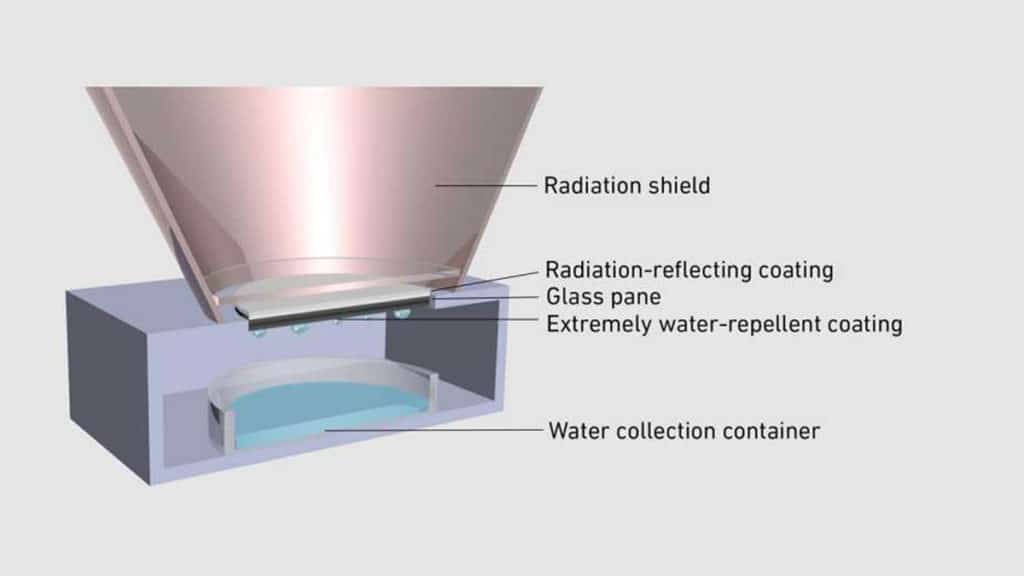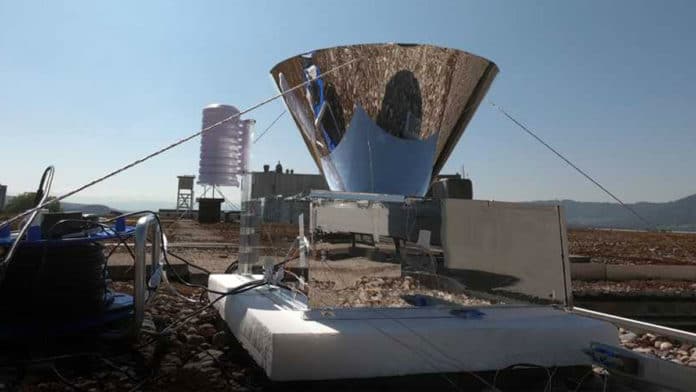Freshwater is scarce in many parts of the world. While currently there is enough fresh water on earth to support consumption, it is not available in a way where supply meets demand. To solve this issue, engineers at ETH Zurich have developed a new device that can harvest drinking water 24 hours around the clock, with no energy input, even under the blazing sun.
It consists of a specially coated glass pane, which both reflects solar radiation and also radiates away its own heat through the atmosphere to outer space. The resulting device thus cools itself down to as much as 15 degrees Celsius below the ambient temperature. At the bottom of the pane, the moisture in the air condenses into the water which is collected.
The glass pane is coated with layers of a specially designed polymer and silver, which allows it to firstly reflect sunlight away to prevent it from heating up. The coating causes the pane to emit infrared radiation at a specific wavelength window to the outer space, with no absorption by the atmosphere nor reflection back onto the pane.

ETH Zurich researchers applied a novel superhydrophobic (extremely water-repellent) coating to the underside of the pane in their water condenser. This causes the condensed water to bead up and run or jump off on its own accord. Additionally, the novel cone-shaped radiation shield device largely deflects heat radiation from the atmosphere and shields the pane from incoming solar radiation.
As tests under real-world conditions have shown, the technology can produce at least twice as much water per area per day as the best current passive technologies based on foils. The small pilot system with a pane diameter of 10 centimeters delivered 4.6 milliliters of water per day under real-world conditions. Larger devices with larger panes would produce more water accordingly.
Researchers were able to show that, under ideal conditions, they could harvest up to 0.53 decilitres of water per square meter of pane surface per hour. “In contrast to other technologies, ours can really function without any additional energy, which is a key advantage,” said the study author Iwan Hächler.
Engineers next plan to further develop this technology or combine it with other methods, such as water desalination, to increase their yield.
